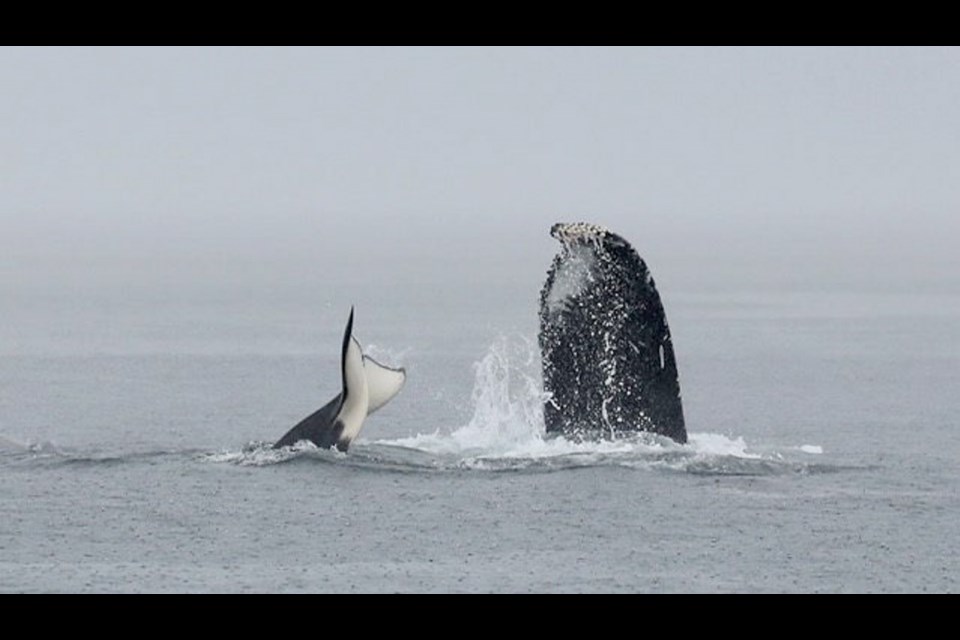Whale-watchers witnessed a dramatic face-off between a group of transient killer whales and a group of massive humpbacks near Jordan River on Sunday.
Dramatics included jockeying around a humpback calf and an explosion of poop — possibly a defence mechanism, one expert said.
The Pacific Whale Watch Association called the encounter — between a group of orcas and two adult humpbacks and a calf — “an epic tussle never seen before by most whale-watchers in this region.”
Valerie Shore, a naturalist for Victoria-based Eagle Wing tours, said the whales were underwater most of the time.
When they did surface, “what we saw was a lot of huffing and puffing from the humpbacks, orcas occasionally surfacing near or next to them, and occasional tail swipes,” she said.
“Much of it was in slow motion, so I got the sense that there was a lot of manoeuvring going on below, perhaps the adult humpbacks trying to block access to the calf.”
The drama heightened when other whales in the area came to check out the commotion.
“At one point, not far from our boat we saw what we thought at the time was a large blood burst and seconds later a humpback, possibly the calf, rose and remained stationary at the surface for a few minutes,” Shore said.
“We all gasped thinking that it was a massive wound, but [another naturalist] radioed later that it was whale poop. Maybe it was a defence mechanism like octopus and squid use — more likely, it was a very frightened humpback.”
Capt. Mark Malleson of Prince of Whales Whale Watching said encounters between orcas, which hunt marine mammals, and adult humpbacks seldom result in a kill.
“I’ve seen a lot of this over the years, but I don’t think the killer whales have much success predating on them,” said Malleson, who also is a researcher for Fisheries and Oceans Canada and the Center for Whale Research on San Juan Island.
“Perhaps the occasional calf, but even that would be rare. It seems they just like bugging them.”
Humpbacks
Scientific name: Megaptera novaeangliae (“big-winged New Englander”)
Weight: 22,000 to 36,000 kilograms; newborns weigh about 900 kg
Length: Up to 18 metres, with females larger than males;newborns are about 4.5 metres long
Appearance: Primarily dark grey, with some areas of white
Lifespan: About 50 years
Diet: Humpbacks are baleen whales — they have a kind of filter system instead of teeth. They eat tiny crustaceans (mostly krill), plankton and small fish; they can consume up to 1,360 kg of food per day
Behaviour: Breaching (jumping out of the water) and slapping the surface
Orcas
Scientific name: Orcinus orca (a.k.a. killer whale)
Weight: Males can weigh up to 10,000 kilograms; females can weigh up to 7,500 kg
Length: Males can reach 10 metres; females can reach 8.5 m
Appearance: Black on top with white undersides and white patches near their eyes; gray or white saddle behind the dorsal fin
Lifespan: Males can live up to 60 years while females can live up to 100 years.
Diet: Varies, but can include fish, marine mammals, sharks and sea birds
Behaviour: Highly social animals, living within matriarchal societies; can stay in one area (resident) or be transient
Source: NOAA



